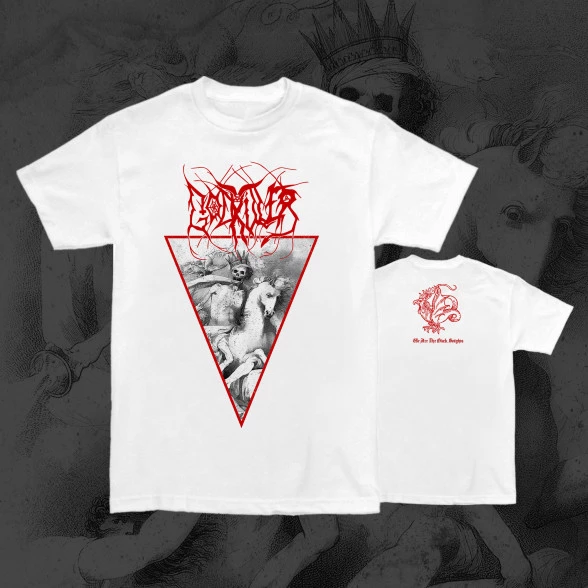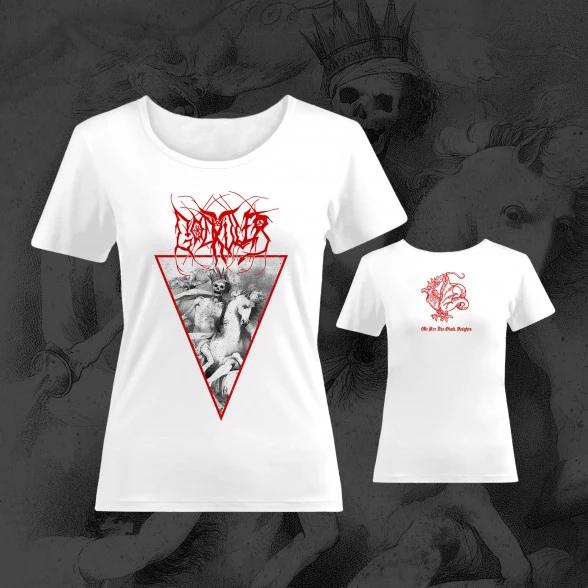Blog search
Artists
- Aara
- Akhlys
- Anfauglir
- Archgoat
- Arkona
- Aversio Humanitatis
- Behexen
- Beneath Moonlight
- Blood Abscission
- Blut Aus Nord
- Bong-Ra
- Cailleach Calling
- Eitrin
- Ershetu
- Godkiller
- I.C.E.
- Inferno
- Insect Ark
- Kaleikr
- Light Of The Morning Star
- Lychgate
- Martröð
- Miserere Luminis
- Modern Rites
- Mütterlein
- Óreiða
- Other World
- Pestifer
- Pestilength
- Pestilent Hex
- Plebeian Grandstand
- Pure Wrath
- Selbst
- Servants Of Chaos Festival
- Slidhr
- Sühnopfer
- Taubrą
- Terra Tenebrosa
- The Lovecraft Sextet
- Throane
- Ulcerate
- Waidelotte
- White Ward
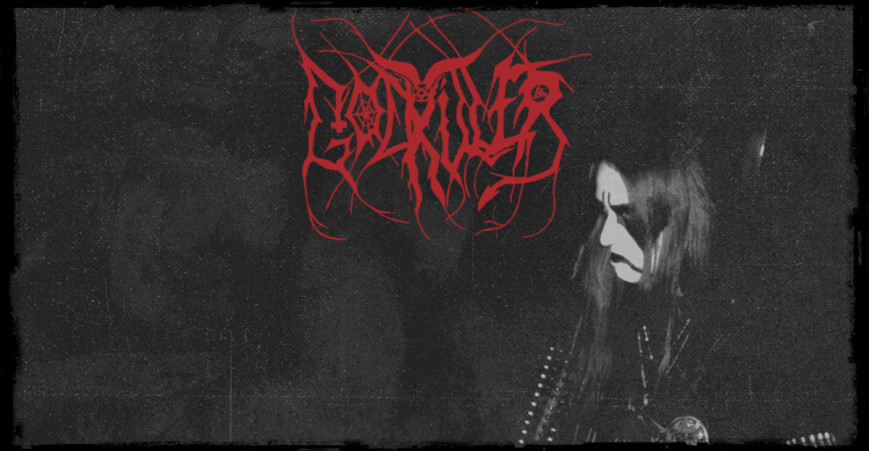
GODKILLER – Interview, Part II
This extensive interview in three parts with Duke Satanaël was originally published by French webzine Obsküre in summer 2022. With their permission, we translated the conversation into English. Find below the second part of the interivew and click here for part one. The original version can be found here.
After the initial two demos, GODKILLER then released a mini album which would go on to influence a whole generation. "The Rebirth Of The Middle Ages" evokes a unique atmosphere, mixing 'Medieval' music and Black Metal. It is a release that deserves its future cult status. After this, having become tired of Black Metal, Duke Satanaël then turned away from traditional Metal sounds and began to walk a new path. Over two subsequent albums, he interpreted Metal music through an Industrial/Electro perspective, all the while managing to retain a mystical atmosphere.
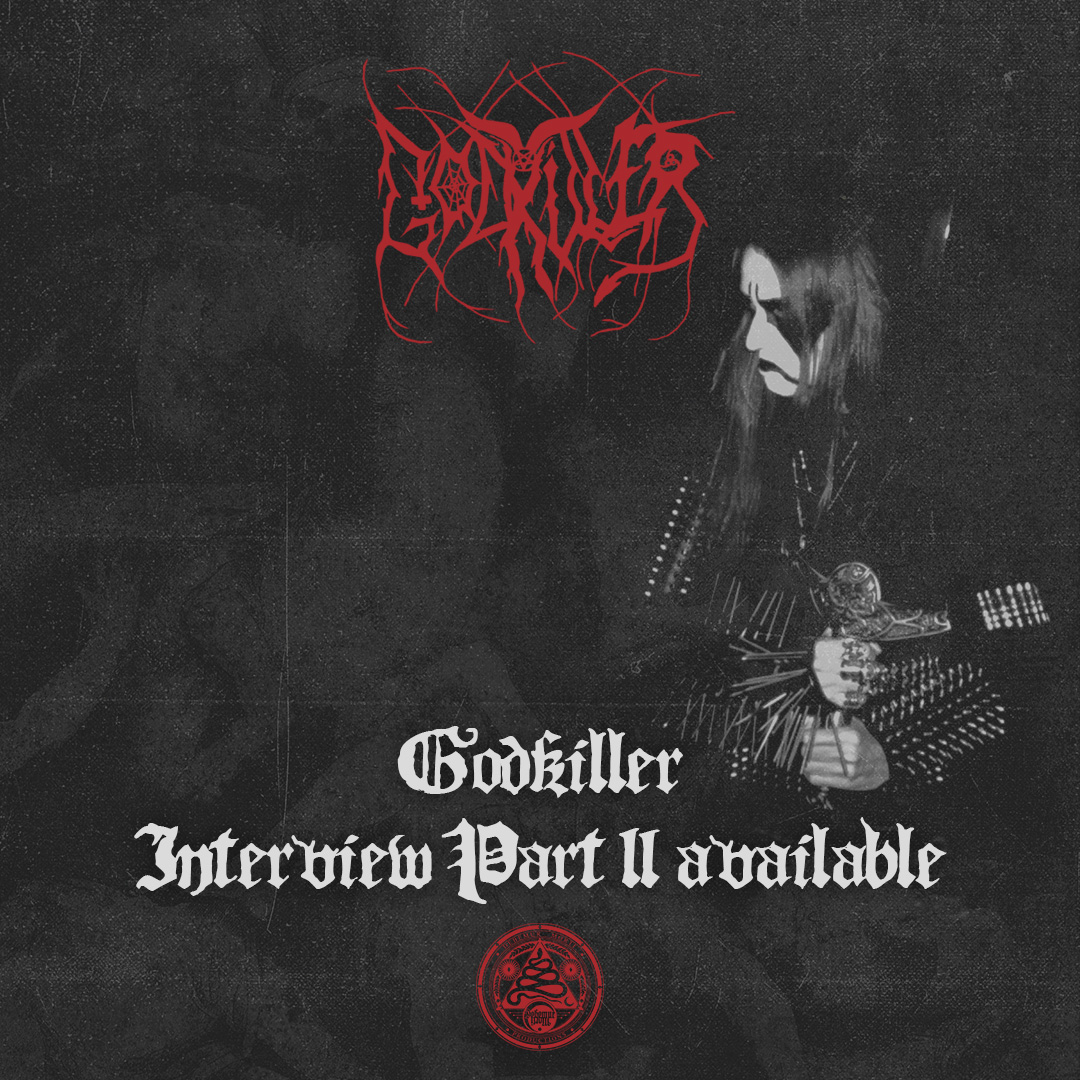
Q: In 1996, the EP "The Rebirth Of The Middle Ages" appeared. Composed from January to June 1995, it is a continuation of the demo "The Warlord". It is a concept album which tells the story of the order of the black knights. Did the composition happen naturally? Did the concept seem obvious to you?
Very soon, the idea was to compose a concept album, indeed. However, the label had imposed a limit on me: an EP of maximum 20 minutes in length. This restriction was at the same time something stimulating, as I had to construct a story which could be told in that amount of time. I started with the already released track "Path to the Unholy Frozen Empire" and integrated it into a saga which dealt with the black knights who reinstate the era of a rediscovered Middle Ages. While working on it, I shortened the pieces. At that time, it was the fashion to compose pieces of ten minutes or more, which, with hindsight, sometimes became frankly boring. The songwriting was done very naturally. The pieces were basically a continuation of "The Warlord", with a better mastery of structures and a better understanding of how to build songs.
Q: For the cover of the EP, you chose a picture of the castle of L'Aiguetta in Èze. This property belonged to Alfred Tennyson and afterwards was transformed into a fortified castle at the very beginning of the 20th century by the entrepreneur Decanale and the Nice architect Marici. I guess like anyone gravitating towards dark music, you were exploring ruins... Was it a place you frequented often? What emotions did that evoke in you?
You have found everything, it's impressive! Indeed, this then abandoned castle was not very far from my home. Every time I passed by, I was fascinated by it. All the openings formed dark, empty, and mysterious rectangles. The facade was eaten away by vegetation. It was conducive to all kinds of daydreaming. I've always liked ruins and cemeteries ... it's a bit banal, but we don't always manage to escape the clichés! What I like is the calm and solitude, and a certain solemnity. I have found the most beautiful ruins, the most beautiful cemeteries, in Scotland and in Cornwall. Sublime places, both wild and very well maintained. I remember a very small cemetery in Scotland, a charming little sloping meadow with a view of a loch: secluded and peaceful. Or the Drumcliffe Cemetery, in Ireland, where I went to see Yeats' grave. Crows flew everywhere and alighted on the stelae.
Q: You signed to Wounded Love Records, a subdivision of Avantgarde Music. Why did you choose this label?
It was the first label that showed serious interest in my music. I had had other contacts before, notably with Norwegian label Head Not Found, but nothing had materialized. Wounded Love was very enthusiastic and immediately wanted to sign GODKILLER for three discs: an EP and two albums. Everything happened naturally.
Q: Many people mention tape trading and zines as a medium for distribution and promotion, but we often forget the role of the K7 or CD compilations offered with magazines – from the most specialized to the most general. Thus, GODKILLER is present on compilations like "Morbid Tunes Of The Black Angels, Part 3" in 1996. The particularity of the tapes such as this released by Lord Puke (The Way of Force) was that they were always accompanied by an A5 booklet, illustrated by David Thierrée. There was one page being devoted to each group which included a bio and contact details. You also appear on magazine samplers such as Hard Force's Hors-série spécial musique extrême (1997) and on Metallian's Metal Explosion 8 and 17. How was the promotion going back then? What did it bring you in terms of contact and visibility?
You are very well informed. And you take me back to a past that I had concealed a bit, not voluntarily, but because a lot of time has elapsed and I've done a lot of other things since then. Indeed, the main source to disseminate the projects was tape trading. It was quite an era. And then there were the fanzines in black and white, printed, and photocopied. Furthermore, it is true that for the groups which began to have a little ‘success’, there were appearances on the K7s and CDs which accompanied certain magazines. For the promo, it was first and foremost tape trading, though. I remember copying over five hundred tapes of "The Warlord", which come to think of it, still isn't bad. And that was only thanks to word-of-mouth propaganda, the work of small fanzines and contacts with other groups all over the world. Today, it must seem surprising to be able to build a small reputation by these ridiculous means. I mean, we are still far off from the launch of any social media! However, at the risk of sounding like an old fool, we built a more solid and authentic reputation this way rather than by simply measuring the number of clicks on a page of any social network.
Once the EP was released, Wounded Love handled the promo very well. I got interviews with radio stations all over Europe. There were quite a few magazine reviews and they sometimes added a track on a compilation accompanying the specific editions, as you mentioned yourself. To answer your last question: What did it bring me in terms of contact and visibility? It's hard to estimate. I probably sold a few more records, got more reviews and interviews, and more people got interested in GODKILLER. If these are/were serious and honest media, then good things come from it as this is a form of appreciable recognition. The risk is to take the plunge with more commercial media which, generally, are only interested in you to create a 'buzz', as we say today. My goal has never been to find commercial success or to become a 'star'. I prefer a thousand times to stay in the shadows and please only the 'happy few', as Stendhal would say.
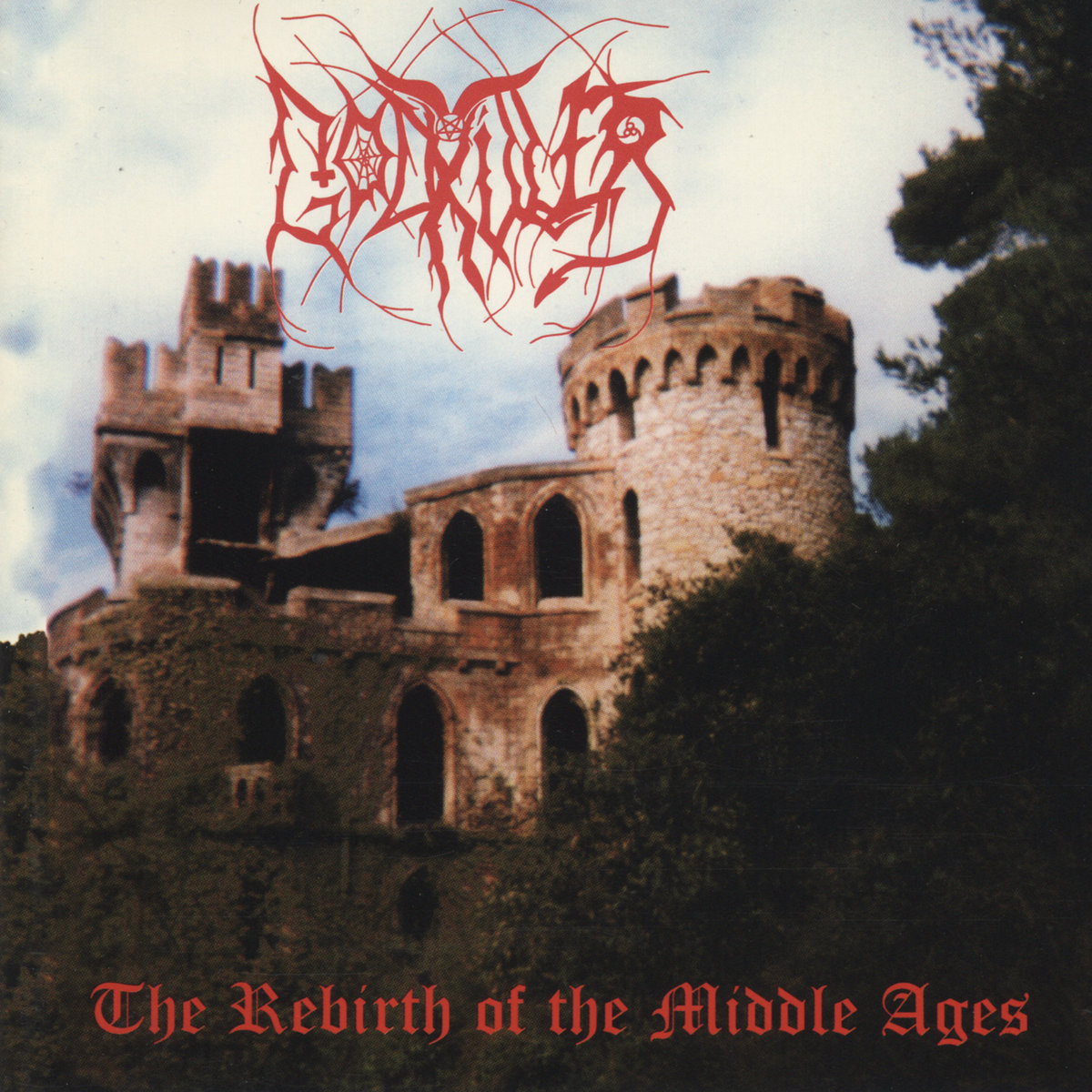
Q: In 1998, tired of Black Metal clichés, the first album marked a rather radical turning point. You moved away from the style of the EP to adopt an Electro Metal approach mixing these elements with Gothic and Industrial influences. The change was quite abrupt. How was the album received?
I have always practiced music for me, first and foremost. It may sound selfish, but it is the only way for an artist to express what is in their stomach, head or heart. I never wanted to find myself hostage to a style or the expectations of an audience. Ending up like RAMMSTEIN (for example and there are lots of others) and repeating a formula ad nauseam is exactly what I didn’t want to do. There is nothing worse when it comes to killing creativity. I want to let my personality go where it takes me. It is also a guarantee of sincerity and authenticity. I could have done "The Rebirth Of The Middle Ages" Part 2, Part 3, and so on, but … why bother? To parody myself and serve up something ready-made that I no longer felt? No. I must be too honest for that. I regularly receive e-mails from people asking me to redo Medieval Black Metal. This is completely impossible for me today. I wouldn't even know what to do anymore, or else I would have to ape what I was doing more than twenty-five years ago. No, impossible! It must also be said that already in 1998, Black Metal had become a caricature of itself.
The reception for the album was mixed. There were the disappointed ones who, at least some of them, even saw a commercial approach (!). And there were the open-minded who understood my journey and followed me. And then there were the new fans. For a close friend, "The End Of The World" is the best GODKILLER release. For me, it's "Deliverance". So, in conclusion, it is very difficult to satisfy everyone.
Q: Apart from the music, the lyrics are more personal and more mature on this album. Did you feel the need to evolve in terms of themes?
Yes, I wanted to write more introspective and more personal lyrics. I wanted to follow the direction of what I liked in lyricists like Robert Smith, Morrissey, Adrian Borland (THE SOUND), or also in poets, for example Baudelaire. I am far from the quality of their writings, but it is this spirit that I wanted to find. Because this is what really crosses my head almost daily. This reflection, or let's say this metaphysical existential anguish, occupies a good part of my daily thoughts. This is how I am; I can't help it.
Q: For the booklet you use two paintings by the painter Francisco de Zurbarán which are characterized by their austere and dark style. Can we see there a fascination for spirituality and mysticism?
Absolutely. This is a trend that asserted itself on "Deliverance" with this appetite for the Old Testament. Then it became even more important with A PRAYER FOR THE WORST. By the way, I note that I have an attraction for painters who use chiaroscuro in a specific way. Caravaggio is the most illustrious, but we also find the use of this technique in José de Ribera, Zurbarán or sometimes Goya … painters that I particularly appreciate.
Q: In 2000, you released "Deliverance" which marks a further step towards an Electro shift. The lyrics are only composed of texts from the Old Testament. How did the idea for this concept come about?
The basic idea was to take the opposite view of what I had done in the past, and what was done in Metal in general: how could a former "Satanist" sing the Bible? That was also the reason for the white color of the cover, although it was counterbalanced by the blood that pours into the sink. There was a lot of irony in this move. And I want to notice en passant that this is the same form of irony that I used with A PRAYER FOR THE WORST. It reminds me a little bit of a cover of THROBBING GRISTLE, namely that of the album "20 Jazz Funk Greats" (already, the title is ironic since it is Industrial music), on which we see four young people (the members of the group) smiling, well in every respect, in a pretty bucolic setting, near a cliff by the sea; except that this cliff – Beachy Head, in the south of England – is well known for people throwing themselves off it to end their lives…This approach in "Deliverance" was also ironic concerning Christianity: I sang only the darkest and most pessimistic passages of the Bible. This goes clearly against the optimistic message of this religion that it spreads nowadays. Christianity has at times been a very harsh, intransigent, pessimistic, nihilistic and paradoxically profoundly inhumane religion.
Q: Through these texts, you highlight questions such as: How to keep faith in such a world? How to believe when you are suffering? ... It is so topical! The cover depicts a sink full of blood, with "Deliverance" as the title. One gets the feeling that for you, faith is not enough...
I was raised in the Catholic faith by my mother (my father is an atheist). Nothing rigorous or fundamentalist, I simply grew up believing in God, in Jesus Christ, in his crucifixion, his resurrection etc. However – on the other side of the coin – it is precisely this belief which very early on shaped my interest in the Devil. I also remember a Devil's Dictionary that my parents gave me for Christmas (it shows their open-mindedness). It is a work by Roland Villeneuve that I still have. As a teenager—the age of blind rebellion—I rejected all Christian teaching in a very blunt way. I did an unqualified reading of Nietzsche, and it all led me to the early Satanism of GODKILLER. My relationship to faith then evolved. I must point out that, after childhood, I never believed in God again. I am ineradicably atheist. However, this does not prevent me from being interested in the phenomena of faith and spirituality. I would even say that spirituality attracts me even more because I am a total stranger to it. It is, as I get older, a theme that fascinates me more and more.
It is quite enthralling to study what faith has caused people to say, and to do, and how much certain men and women have lost themselves in faith to the point of madness, or even to death. On this subject, I recommend reading "Relations de la Mort de quelques Religieux de l'Abbaye de la Trappe" by the Abbé de Rancé. At the base of Christian faith lies a great distress, a deep suffering. This is both the root and the raison d'être. It is through this that I returned to Christianity – an intellectual return, of course –, and it was this aspect which I tried to highlight on "Deliverance". The texts chosen to form the lyrics only express pain – we find the pain of being born (it reminds me of Emil Cioran), of living, of suffering without purpose or reason. There are terrible phrases in the Bible, more terrible than anything written after them by Dante, Shakespeare, Pascal, Schopenhauer, Nietzsche or Cioran. There are terrifying anathemas being hurled against the human species. It is this aspect that fascinates me and at the same time repels me. I have an attraction/repulsion relationship with Christianity.
Q: After "Deliverance", the project lay dormant but only at the surface. Tired of bootlegs and insane prices, you started offering your two demos as free downloads. In addition, we witnessed reissues of these demos in a luxury box and EP, but also in the form of merch. Are other reissues planned?
The free download of the demos was indeed caused by observing the release of poor-quality bootlegs. Then after receiving regular requests from labels and other small structures, it seemed that the time had come to officially release the works of the past. Peaceville began the process in 2021 by re-releasing the first EP on vinyl and CD. I have since signed a contract with Debemur Morti Productions to re-release both demos on vinyl and CD on December 9th, 2022. Phil, the owner of Debemur Morti Productions, convinced me to do it. His label remains on a human scale. He is passionate and knows how to do things well.
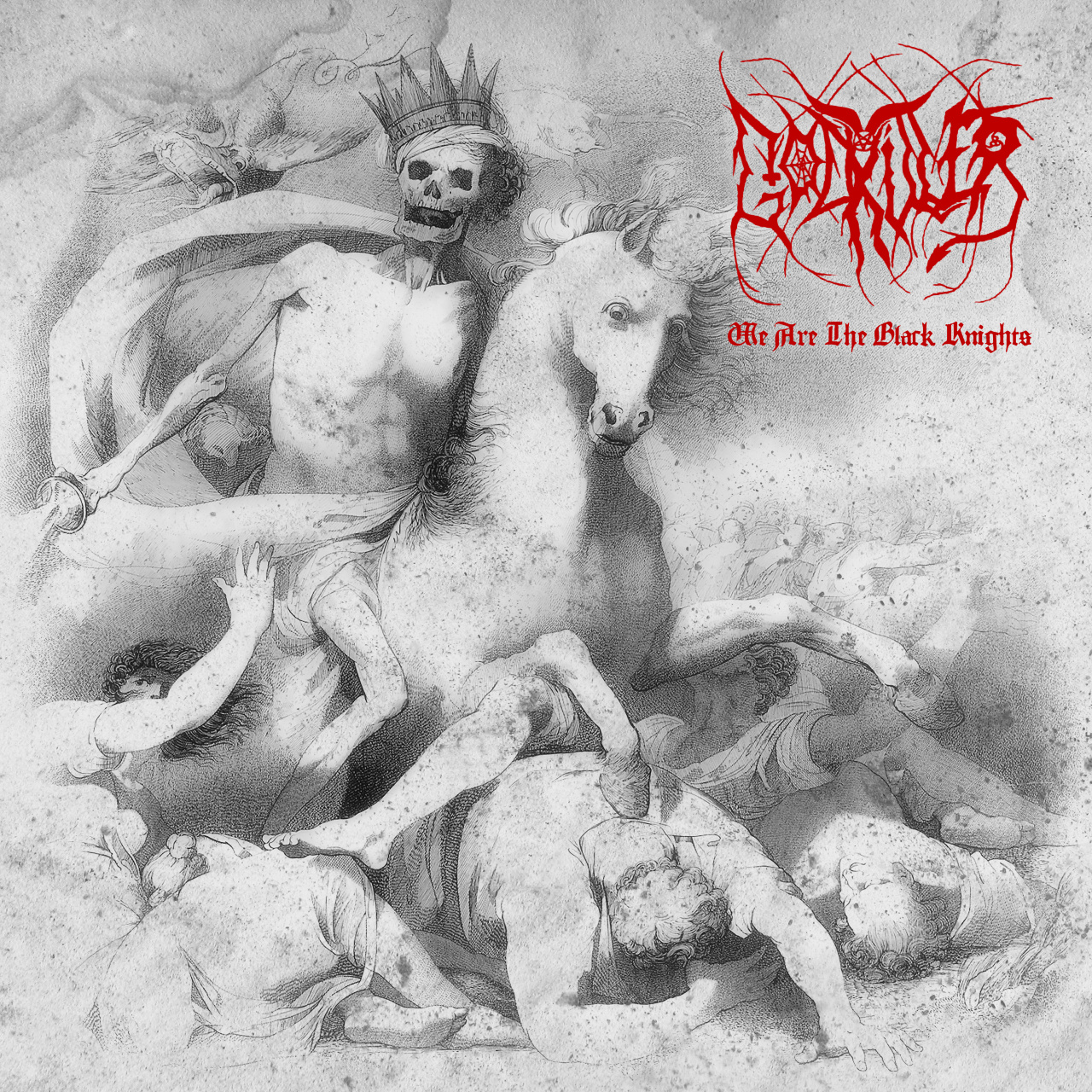
No products
To be determined Shipping
0,00 € Total
